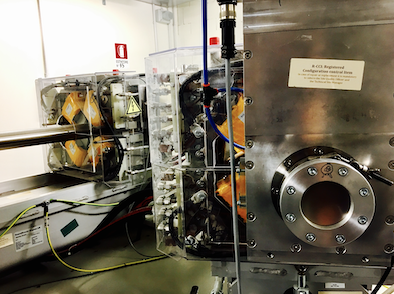Speaker
Description
The FOOT (FragmentatiOn Of Target) experiment aims to perform systematic measurements of nuclear fragmentation cross sections in the energy range useful for particle therapy and space radioprotection. The experiment is designed to measure both projectile fragmentation of different nuclei (C, O, He) on C and CH targets, and also to extract target fragmentation cross sections in p-C and p-O collision processes, by means of inverse kinematic reconstruction.
FOOT consists of two different setups for the detection of heavy (Z≥3) and light (Z≤3) fragments: the former are detected by a high precision tracking system in magnetic field, a time of flight measurement system and a calorimeter, while the latter are measured by a separated emulsion cloud chamber detector. Both the experimental setups include a drift chamber that is adopted to measure the direction and position of the incident primary particles. Extensive tests have been carried out at the experimental facility of Trento protontherapy in order to characterize the drift chamber. The space-time relations calibration and the performance have been assessed by means of the proton beam at the kinetic energy of 228 and 80 MeV. An external tracking system composed of different layers of microstrip silicon detectors was used as independent reference. The measured overall detection efficiency is 0.929 ± 0.008. The detector spatial resolution has been evaluated to be 150 ± 10 μm and 300 ± 10 μm for the higher and lower beam energies, respectively. In addition, the upper limit on the drift chamber resolution has been found to be of 60 ÷ 100 μm. These figures match the expectations required for the operation of FOOT. In this contribution we shall present the materials and the procedures adopted for the data taking, the detector performance assessment methods and the experimental results, together with an overview of the FOOT experiment.

